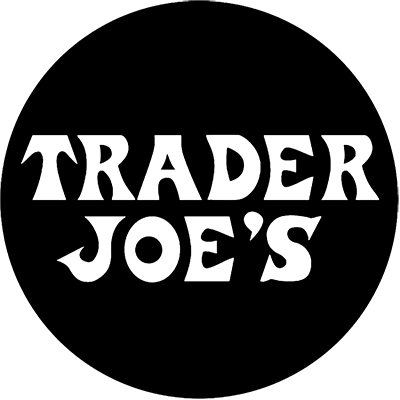Focus
Trade-offs
What are you willing to give up? See how brands give up potential profits in order to stay true to their purpose.
Don't be pressured to make decisions that will hurt your culture
In the early 2000s, the Samwer brothers were cloning US tech start-ups and then selling the clone to the original company for a considerable premium. By 2011, they created Wimdu, an Airbnb clone that grew to have more than 10,000 properties available in the first 100 days. They did this by rapidly growing and hiring 400 employees practically overnight.
This rapid growth concerned Airbnb co-founder Brian Chesky because, as he explains, "Most companies, if they lose Europe, they're just a smaller company. For Airbnb, if we lose Europe, there is no Airbnb. A travel website where you can't travel to Europe is like a phone without a signal."
However, when the Samwer brothers looked to sell Wimdu to Airbnb, Brian refused. He did not want to absorb 400 employees, who he felt were more like mercenaries for a company that cared more about short-term profits than believing in a long-term purpose.
Ultimately, Airbnb beat Wimdu in growth because, as Brian explains, "We had a better community, and [Wimdu] couldn't understand community. We ended up flying to Europe. We hired a bunch of country managers. We flew them all to San Francisco and trained them for a month or two. We said, 'Now go to your countries. Hire your team. Here's how you open a market. Here's how you open cities. And we opened eight or ten offices in three months."
Cut products to focus on quality
When Steve Jobs returned to Apple in 1997, Apple was 90 days from closing its doors. Their product line was bloated, unfocused, and so confusing it wasn't even clear how all 12 versions of the Macintosh differed from one another.
To increase quality and simplify the choice for the consumer, Jobs cut the Apple product line by 70%. Using a four quadrant matrix, Jobs focused the company on making just four products: one desktop and one portable device aimed at both consumers and professionals. As Steve put it at MacWorld 1998: "If we only had four, we could put the A-team on every single one of them...So, that’s what we decided to do, to focus on four great products."
After just one year, the nearly bankrupt company turned a $309 million profit. Even today as Apple expands their product line, they use the same type of matrix to focus on simplicity and quality.
Give up market share for a closed system
Apple believes that to create the best products and user experiences, they need to have complete end-to-end control over the hardware and software of their products. This closed system allows Apple products to work seamlessly together, and is exactly what made the iPod to iTunes to Mac experience so much simpler than its rival MP3 players.
But choosing a closed system did come at a cost in terms of market share. IBM, and later Microsoft, licensed their operating systems to other computer makers. This was a much cheaper solution than having to buy an Apple computer, which led to the PC becoming the industry standard in the business world.
Sacrifice consumer expectations for better products
There was a time when every computer was expected to have a USB port and every phone, a headphone jack. Apple removed those and many other features along the way, in their quest to make great products.
As Steve Jobs put it, Apple has "the courage of our convictions to say we don't think this is part of what makes a great product. We're going to leave it out. Some people are going to not like that. They're going to call us names...but we're going to take the heat because we want to make the best product in the world for customers. We're going to instead focus our energy on the technologies which we think are in their ascendancy" and leave out those that they see as archaic.
A short list of updates that drove Apple customers to adapt to, and often buy, new technology, plug-ins, and adaptors:
- Replaced the 5" floppy disk for the 3.5" floppy disk with the Macintosh
- Removed the floppy disk entirely from the iMac
- Removed all Adobe Flash compatibility from their devices in 2010
- Dropped serial and parallel ports to be an early adopter of USB ports
- Got rid of optical drives (DVD/Blu-Ray players) with Macbook Air
- Removed the headphone jack from the iPhone 7
Give up revenue from promotional sales and discounts to avoid cheapening your brand
Retail discounts and sales for Apple products just don't exist. Not only do they cheapen the brand, but they create an expectation that all consumers have to do is wait and eventually the price will go down.
Don't compromise privacy even to investigate terrorism
After a terrorist attack in San Bernardino, the FBI requested that Apple "make a new version of the iPhone operating system, circumventing several important security features, and install it on an iPhone recovered during the investigation." Apple refused, not because they didn't want to help, but to create a back door would weaken the security and privacy of all its customers.
Give up $1 billion a year to stay closed on Sundays
Although the policy is rooted in their religious beliefs, Chick-fil-A believes in giving employees one day a week off to rest and spend time with family. Even with being closed on the most popular shopping day of the week, Chick-fil-A still makes more per restaurant than McDonald's, Starbucks, and Subway combined.
Limit your product selection to what you do best
Hamburgers make up about 40% of all fast-food dining in the US. That's 50 billion hamburgers every year and Chick-fil-A doesn't even have them on their menu. And why should they when they have built their reputation on inventing and perfecting the chicken sandwich. Their authority in this industry helped them not lose any sales during the Chicken Sandwich Wars of 2019 and has kept them firmly ranked as the third largest fast food restaurant.
Give up capital and rapid growth in order to make more charitable contributions
As one of the largest privately owned restaurant companies in the US, Chick-fil-A never plans to offer stock options to the public. Too often Wall Street focuses on profits over principles which might limit the large amounts of money Chick-fil-A gives to charity. To Chick-fil-A, being generous today, is what guarantees a successful future.
Choose values, over gimmicks
Instead of focusing their kids' meals on the most popular movies or TV shows, Chick-fil-A gives out books on history, geography, weather, and dozens of other subjects. Their goal is to not draw families in because of gimmicks but instead to create opportunities for children to learn and parents to be a part of that journey.
Leave markets if they don't share your values
In 2006, Google entered the Chinese market with a localized Chinese site, Google.cn. Founder, Sergey Brin, protested this move because it meant that they would have to abide by the Chinese government's censorship policies. However, other leaders felt that the most ethical option was to offer this large market censored information and work on "helping change government censorship practices."
But in 2010 after cyberattacks targeted Google's intellectual property and the Gmail accounts of human rights activists, Google's leadership changed their minds. They felt that the "behavior [they] were seeing was evil" and conflicted with their values. Instead of continuing to comply with the government, Google stopped their search service in China completely.
Replace late fees with a subscription model
Blockbuster, at its peak in the late 90s, was earning $800 million each year in late fees alone. Netflix, however, felt that you couldn't build loyalty based on a business model that relied on making customers feel stupid. Instead Netflix chose a simple flat-fee subscription-based model allowing anyone to unsubscribe at anytime.
Sacrifice cross promotions and pay walls for a frictionless experience
Even though it might be profitable for others, Netflix is all about flat-fee commercial-free unlimited viewing. This means no cross-selling content before a show and no hiding content behind pay walls. This also removes any dangerous rabbit holes that kids might find themselves falling into on platforms like YouTube.
Limit your product selection to what you do best
Netflix makes it clear in their Investor Kit that they are not a "generic 'video' company that streams all types of video such as news, user-generated, live sports, porn, music video, and gaming."
Stop selling popular products that conflict with your cause
Even though Patagonia was the leading manufacturer of pitons, the brand stopped selling them once they realized the damage the product was having on the environment. Patagonia instead started selling a new unfamiliar climbing tool called chocks. To educate their customer-base, their next catalog opened with an editorial on the environmental hazards of pitons and detailed a climb that Patagonia team members made using only chocks. Within a few months of the catalog's mailing the global piton business atrophied and chocks were selling faster than they could be made.
Don't offer inexpensive product lines to expand your customer reach
Even though offering a cheaper product line would bring Patagonia into new markets, it would also lead to people consuming more than they need. As Patagonia sees it, a higher price point makes people think more about every purchase they make.
This decision has been advantageous for the brand even in times of recession as people become less frivolous about their purchases. As founder Yvon Chouinard writes: "[People] don't mind paying more for goods that won't go out of style and are of such quality that they will last a long time."
Say no to capital investment in order to follow your purpose
Patagonia refuses to be a publicly traded company or to accept outside investments of any kind. This allows them to run their business without any pressure to abandon or compromise their purpose.
Give up $1 billion of sales in order to be more sustainable
For years Patagonia's co-branded vests were extremely popular amongst investment and tech companies on Wall Street and in the Silicon Valley. However, Patagonia put an end to these partnerships after deciding that non-removable co-branded logos greatly reduced the longevity of the garment. Bloomberg estimated that this decision cost Patagonia nearly $1 billion in 2019.
Don't sell your products in large chains and department stores
Patagonia has no interest in selling their apparel to department stores or to the giant sporting good chains. With so many outdoor brands having "similar looking products, made from the same materials, sewn in the same factories, and with similar performance," these larger stores can't really afford to carry any one brand in depth or educate their customers on the differences between the options.
Instead, Patagonia prefers to have their products in smaller specialty shops that only carry a few select brands. In these smaller stores, employees are better at guiding and sharing knowledge with customers so that they understand the difference between "quality and crap" products.
Spend money on improving quality, not advertising
As Yvon Chouinard writes: "Our charter is to inspire and educate rather than to promote...We don't force our growth by stepping out of the specialty outdoor market and trying to be who we aren't. We would rather earn credibility than buy it."
With an advertising budget of .05% of sales, Patagonia says no to advertising with businesses like Vanity Fair and GQ, and also doesn't create fancy press kits or host elaborate press parties. Patagonia has found that the most effective ways to get their message out is through customer word-of-mouth and genuine (unpaid) favorable attention from the press.
Limit your customer reach in order to keep costs low
Sites like Priceline, Travelocity, and Kayak, used to account for 35 to 40% of Southwest's business. However, today you cannot find Southwest on any of these sites because of these three C's:
- Cost: Computer reservation systems started charging commission which would have increased the cost of Southwest flights.
- Commoditization: Search engine sites have commoditized the airline industry with price comparison tools that devalue the brands that are on them.
- Control: If a search engine site publishes a rate different from what is on Southwest's website, it lowers the customer's trust in the brand.
As a result, Southwest developed their own system that enabled travel agents and customers to connect directly with them and cut out the middleman.
Sacrifice market share for profitability
Southwest founder Herb Kelleher does not see how market share has anything to do with profitability. He believes that "market share says we just want to be big; we don't care if we make money doing it. That's what misled much of the airline industry for fifteen years, after deregulation. In order to get an additional 5% of the market, some companies increased their costs by 25%."
Herb attributes Southwest's 37 years of uninterupted profits to their ability to pass up market growth opportunites in order to keep costs low and profitability high. Instead, Southwest's strategy has been to grow very conservatively. They expand into only one or two cities each year, which allows them the time and attention they need to infuse their strong culture into each new location.
Don't be distracted by the next shiny object
When co-founder Herb Kelleher was approached by a European billionaire to establish a Southwest low-fare carrier in Europe, his reply was a simple 'No.' While this partnership would have grown Southwest's market share, expanding out into a different continent would have meant navigating different cultures, currencies, and regulators. It would have also meant needing to use different types of airplanes. To Herb, this would have been too much of a distraction away from Southwest's core strategy.
For this same reason, Southwest also sold off Muse Air, an airline they had acquired that offered longer-haul service and more amenities. It didn't fit with their core strategy and as a result, became a liability.
Never sacrifice quality for affordability
Even as prices rose during the 2008 recession and Starbucks became known as 'Fivebucks,' a symbol of excess in frugal times, they refused to use cheaper beans to save costs. As Howard Schultz has said: "I don't like using price as a competitive tool because it's not sustainable. I like being in the premium space.'
Ban anything that interferes with the experience
From the start, former CEO Howard Schultz banned smoking in stores, even in smoking cultures, as the smell interfered with the smell of the coffee. Additionally, employees were not allowed to wear perfumes or colognes and even the wall paint was chosen to avoid interfering with the coffee aroma.
Big selling items that detracted from the experience were also removed, which included:
- Warm sandwiches. These were removed until they could develop a way to eliminate the odor of melting cheese from the air completely.
- CDs and DVDs. These were removed because sales distracted baristas from focusing on pouring the perfect coffee.
Say no to franchises in order to stay more connected with your customers
Although franchising is a quick and easy way to raise capital, "Schultz viewed franchisees as middlemen standing between Starbucks and its customers."
Say no to expansion in order to preserve quality
In the late 1980s, even though it could have tripled Starbucks' sales, Schultz refused to sell whole beans in supermarkets like his competitors. Not only did he want to stay differentiated from grocery store coffee, but he also did not want to jeopardize the Starbucks brand promise by pouring beans into clear plastic containers, where they could go stale.
Close stores in order to retrain staff
Starbucks has closed their stores twice in order to take time to retrain their staff on their values. Not only would being closed cost Starbucks millions of dollars in revenue but competitors used these as opportunities to offer great deals on coffee to lure Starbucks customers away. But to Starbucks, this short term loss in sales was worth it in order to rebuild and strengthen the Starbucks Experience.
Don't offer self-service options
Even during the global pandemic, Trader Joe's has refused to invest in self-service options like self-checkout, grocery delivery, online ordering, and curbside pickup. Instead, they want to encourage personal interactions. Jon Basalone, President of Stores describes it like this: "The store is our brand and our products work the best when they're sold as part of this overall customer experience within the store. And so we're not ready to give that up. For us, the brand is too important."
Say no to sales, specials, and discounts
With a firm belief that all customers should have access to the best prices at all times, Trader Joe's stays away from anything that could provide better value to one customer over another. As founder Joe Coulombe puts it, "One of the fundamental tenets of Trader Joe’s is that retail prices don’t change unless costs change...Supermarket pricing is a shell game and I wanted no part of it." This also included saying no to these other price manipulators:
- No coupons
- No price matching
- No loyalty programs or membership cards
- No senior discounts
- No weekend ad prices
- No in-and-out pricing
- Absolutely no closeout sales
Don't sacrifice your brand strength for faster growth through franchising
Even though it would lead to faster growth, whenever founder Joe Coulombe was asked about franchising Trader Joe's, he wouldn't "just tell them 'no,' but 'Hell no.'" The store wants to remain having complete control over the quality of their people, products, and prices.
Give up fee revenue to keep prices low
Almost all grocers charge their suppliers a slotting fee, which Trader Joe's founder Joe Coulombe describes as "the blackmail that vendors pay to have their products on supermarkets' shelves."
While this fee protects the grocery store from incurring a loss if a product doesn't sell, it also raises the product's price for the customer because suppliers offset this cost by raising the price of their products. This practice also only guarantees shelf space to the highest bidder, not to the best product. For these reasons, Trader Joe's has always refused to charge slotting fees to their suppliers, instead opting to "get the right product at the lowest possible cost."
Be willing to stop carrying any product, even if they are an industry standard
"The willingness to do without any given product is one of the cornerstones of Trader Joe's merchandising philosophy." They consider themselves a specialty store and have no interest in offering full lines of products or having a depth of assortment. Instead, they reserve their limited shelf space of 4,000 SKUs to products that only:
- Offer exceptional quality. If a Trader Joe's product can't be differentiated or isn't better than a similar product in a supermarket, they won't sell it. Table salt and deli sandwiches were discontinued for this reason.
- Offer exceptional value. Trader Joe's is no stranger to discontinuing a product over a few pennies of wholesale cost if it means that other stores could offer a competitive or better price. This is why they do not carry Coke or Budweiser.
- Are profitable. You won't find bulky products like paper towels, sugar, or whole wheat flour at Trader Joe's because they have a low value per cubic inch.
- Sell well. It's a democratic process where customers vote with their dollars.
Don't spend marketing dollars on ad agencies, PR firms, or social media
When it comes to marketing, Trader Joe's keeps expenses low, so they can focus on the customer experience. That means saying no to:
- Ad agencies: Trader Joe's relies on their in-house team to design, write copy, and produce their podcast and YouTube videos.
- Public relations firms: To Trader Joe's they are "a waste of money," even during times when their products are recalled.
- Online paid campaigns: Besides their Instagram and Pinterest accounts and their monthly podcast, Trader Joe's doesn't have active Facebook or Twitter profiles, let alone spend money on paid online campaigns.
Instead, Trader Joe's relies on word of mouth marketing, by spending the majority of their marketing dollars on letting customers sample their food. This has resulted in countless fan-based Trader Joe's social media sites that promote the brand for them.
Don't outsource your call center to save money
As a company that is obsessed about customer service, it didn't make sense to Zappos to outsource their core competency. They even rejected the idea of a satellite call center, because, for Co-Founder Tony Hsieh, "it wouldn’t be matching our actions to our words. If we were serious about building our brand around being the best in customer service, customer service had to be the whole company, not just a single department."
Don't weaken your brand with blanket discounts or promotions
In an online world that is dominated by discounts and coupons, Zappos chooses to differentiate themselves as a premium service brand. They see their customers not so much as price-conscious, but as service- and selection-conscious instead. By avoiding anything that directly relates to monetary compensation, they can focus on providing WOW experiences while upholding their brand integrity and the brand integrity of their offered couture brands. While they do offer some price matching, it is only as needed when compared to other premium competitors.
Spend money on service, not advertising
As Tony Hsieh has stated: “Our whole philosophy became ‘let’s take most of the money we would’ve spent on paid advertising and paid marketing and instead of spending it on that, invest it in the customer experience/customer service and then let our customers do the marketing for us through word of mouth, and that became the whole business model..." And as a result, 75% of all Zappos orders are placed by returning customers.
Reduce your profitability on shipping for a better customer experience
Originally, Zappos would drop ship orders to their customers. It was a simple way to reduce cost and increase profits, but it also left some customers disappointed. As much as 5% of drop shipped orders were either shipped slowly, inaccurately, or went unfulfilled because the manufacturer didn't properly update their inventory feeds.
Even though drop shipping made up 25% of the revenue stream for Zappos, they abandoned the practice and expanded their own warehouse to have full control of their customer's buying experience.










